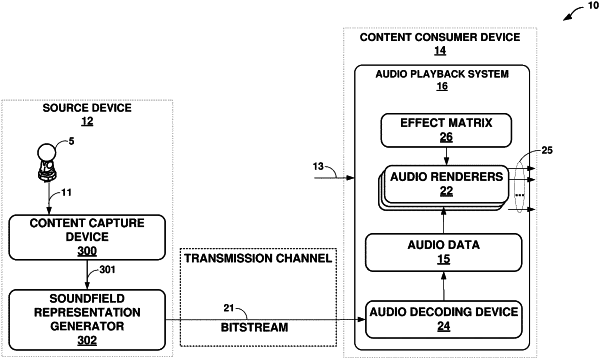| CPC H04S 7/304 (2013.01) [G06F 3/012 (2013.01); G06F 3/0346 (2013.01); G06T 19/006 (2013.01); G06V 20/20 (2022.01); H04W 4/027 (2013.01); H04W 4/029 (2018.02); H04S 2420/01 (2013.01)] | 23 Claims |

|
1. A device comprising:
a memory configured to store audio data representative of a soundfield captured at a plurality of capture locations, metadata that enables the audio data to be rendered to support N degrees of freedom, and adaptation metadata that enables the audio data to be rendered to support M degrees of freedom, wherein N is a first integer number and M is a second integer number that is different than the first integer number; and
one or more processors coupled to the memory, and configured to:
determine a user location by receiving, from a user, an input indicative of one of a plurality of locations or indicative of a position on a trajectory;
adapt, based on the adaptation metadata, the audio data to provide the M degrees of freedom; and
generate speaker feeds based on the adapted audio data.
|